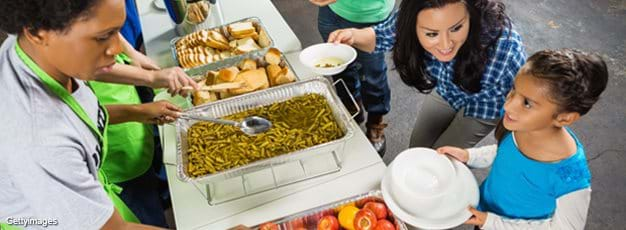Nearly 30 Percent of the Times That USDA SNAP Households Acquire Food, the Food Is Free

U.S. households obtain food from a variety of sources, including retail food stores, restaurants, schools, and work places. Some of these acquisitions—such as meals at family gatherings and employer-provided meals and snacks—are free to the household and are therefore not captured in expenditure surveys. USDA’s National Household Food Acquisition and Purchase Survey (FoodAPS) was designed to capture information about food obtained from all sources—both paid and free—from a nationally representative sample of about 4,800 households. These households were asked to report each food acquisition event over the course of 7 days between April 2012 and January 2013, noting where the food was obtained and how much the household paid for each item or if the food was free.
On average, 22 percent of the times that households obtained food, they reported that the acquisition event was free. A food acquisition event can be the acquisition of a single meal or snack, multiple meals, or a grocery store visit to obtain the week’s groceries. The share of acquisition events that were free was higher among USDA's Supplemental Nutrition Assistance Program (SNAP) participants (30 percent) as compared to low-income and higher income nonparticipants (22 and 21 percent, respectively). Much of this difference is because there is a larger share of free food from schools and family and friends among SNAP participants.
Just over 10 percent of all SNAP participants’ acquisition events (one-third of all their free events) was from family, friends, and through social gatherings such as at neighborhood and community events. Lower income nonparticipants reported close to 8 percent of all acquisition events, while higher income households reported about 7 percent, as being provided for free from family, friends, and at social gatherings.
The differences across household groups were even larger with respect to free acquisition events from schools. SNAP households reported that over 8 percent of their food acquisition events were provided for free by schools, while lower income nonparticipants reported 3 percent of their events as being free from schools, and higher income households reported less than 2 percent. SNAP households are automatically eligible for free meals from USDA's School Breakfast Program and its National School Lunch Program, which may make it easier for them to access these free meals.
SNAP households were also more likely than higher income households to report obtaining food from food banks and Meals on Wheels for free. In contrast, a smaller share of all acquisition events in SNAP households were provided for free from restaurants and other eating places and from the work place as compared to higher income households.
These differences highlight the importance of schools, family, friends, and other social networks for SNAP households and the extent these households rely on sources of non-purchased foods.
FoodAPS National Household Food Acquisition and Purchase Survey, by Elina T. Page and Linda Kantor, USDA, Economic Research Service, September 2022
Where Households Get Food in a Typical Week: Findings from USDA’s FoodAPS, by Jessica E. Todd and Benjamin Scharadin, ERS, July 2016


